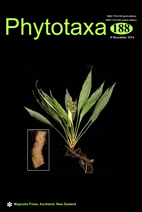Abstract
This paper is the second in a series of biodiversity papers on Lactarius subgenus Russularia in tropical forests of Southeast Asia. This study is based on extensive mycological exploration, especially in Northern Thailand, during the past ten years. In this paper we consider some species that are characterized by remarkably small basidiocarps i.e. with an average pileus diameter that is smaller than 20 mm. One of the most common species in Northern Thailand with dwarf basidiocarps is L. gracilis, originally described from Japan. We introduce the new species L. crenulatulus, L. perparvus and L. glabrigracilis with morphological descriptions and illustrations. Molecular evidence based on the ITS sequence analysis supports the classification and novel status of the taxa. All species are associated with trees belonging to the Fagaceae. These are the first reported collections of small basidiocarps of L. subg. Russularia in Southeast Asia. In our paper we compare these new species with small basidiocarp with similar representatives from Europe and other Asian regions.

